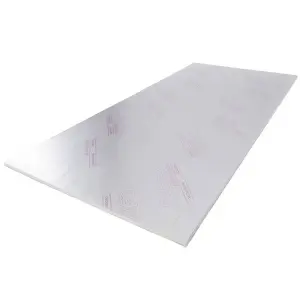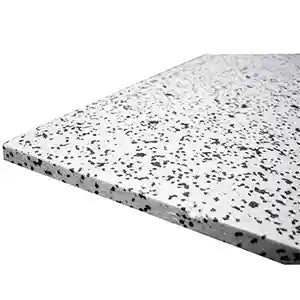Knauf
Knauf Acoustic Insulation Roll (APR) - 25mm (26.64m²) (4 Rolls/Pack)
£41.22 Ex VAT£43.39£49.46 Inc VAT£52.07Unit price£0.00 Inc VAT/UnavailableKnauf
Knauf Acoustic Insulation Roll (APR) - 50mm (16.2m²) (2 Rolls/Pack)
£39.16 Ex VAT£41.92£46.99 Inc VAT£50.30Unit price£0.00 Inc VAT/UnavailableKnauf
Knauf Acoustic Insulation Roll (APR) - 75mm (17.4m²) (1 Roll/Pack)
£61.68 Ex VAT£74.02 Inc VATUnit price£0.00 Inc VAT/UnavailableKnauf
Knauf Acoustic Insulation Roll (APR) - 100mm (12.36m²) (1 Roll/Pack)
£54.45 Ex VAT£65.34 Inc VATUnit price£0.00 Inc VAT/UnavailableKnauf
Knauf Acoustic Insulation Roll (APR) - 25mm (639.36m²) - 24 Pack (4 Rolls/Pack)
£933.33 Ex VAT£1,344.00£1,120.00 Inc VAT£1,612.80Unit price£0.00 Inc VAT/UnavailableKnauf
Knauf Acoustic Insulation Roll (APR) - 50mm ( 388.8m²) - 24 Pack (2 Rolls/Pack)
£883.33 Ex VAT£1,248.00£1,060.00 Inc VAT£1,497.60Unit price£0.00 Inc VAT/UnavailableKnauf
Knauf Acoustic Insulation Roll (APR) - 75mm (417.6m²) - 24 Pack (1 Roll/Pack)
£1,400.00 Ex VAT£1,656.00£1,680.00 Inc VAT£1,987.20Unit price£0.00 Inc VAT/UnavailableKnauf
Knauf Acoustic Insulation Roll (APR) - 100mm (296.64m²) - 24 Pack (1 Roll/Pack)
£1,233.33 Ex VAT£1,399.99£1,480.00 Inc VAT£1,679.99Unit price£0.00 Inc VAT/UnavailableIsover
25mm Isover Acoustic Partition Roll (APR) Insulation - 24m² (2 Rolls/Pack)
£40.61 Ex VAT£48.73 Inc VATUnit price£0.00 Inc VAT/UnavailableIsover
50mm Isover Acoustic Partition Roll (APR) Insulation - 15.6m² (2 Rolls/Pack)
£43.98 Ex VAT£52.78 Inc VATUnit price£0.00 Inc VAT/UnavailableIsover
100mm Isover Acoustic Partition Roll (APR) Insulation - 11m² (2 Rolls/Pack)
£51.29 Ex VAT£61.55 Inc VATUnit price£0.00 Inc VAT/UnavailableRockwool
50mm Rockwool RWA45 Acoustic Insulation Slab 1200mm x 600mm - 6.48m²
£29.02 Ex VAT£34.82 Inc VATUnit price£0.00 Inc VAT/UnavailableRockwool
75mm Rockwool RWA45 Acoustic Insulation Slab 1200mm x 600mm - 4.32m²
£29.12 Ex VAT£34.94 Inc VATUnit price£0.00 Inc VAT/UnavailableRockwool
100mm Rockwool RWA45 Acoustic Insulation Slab 1200mm x 600mm - 2.88m²
£26.01 Ex VAT£31.21 Inc VATUnit price£0.00 Inc VAT/UnavailableRockwool
Rockwool Hardrock Multi-Fix Recovery Board Flat Roof Insulation - 1200 x 1000 x 30mm (1.2m²)
£19.16 Ex VAT£22.99 Inc VATUnit price£0.00 Inc VAT/UnavailableRockwool
60mm Rockwool Hardrock Multi-Fix (DD) Flat Roof Insulation - 1200mm x 1000mm (1.2m²)
£32.31 Ex VAT£38.77 Inc VATUnit price£0.00 Inc VAT/UnavailableRockwool
85mm Rockwool Hardrock Multi-Fix (DD) Flat Roof Insulation - 1200 x 1000 x (1.2m²)
£42.98 Ex VAT£51.58 Inc VATUnit price£0.00 Inc VAT/UnavailableRockwool
105mm Rockwool Hardrock Multi-Fix (DD) Flat Roof Insulation - 1200mm x 1000mm (1.2m²)
£56.16 Ex VAT£67.39 Inc VATUnit price£0.00 Inc VAT/UnavailableRockwool
115mm Rockwool Hardrock Multi-Fix (DD) Flat Roof Insulation - 1200mm x 1000mm (1.2m²)
£61.53 Ex VAT£73.84 Inc VATUnit price£0.00 Inc VAT/UnavailableRockwool
150mm Rockwool Hardrock Multi-Fix (DD) Flat Roof Insulation - 1200mm x 1000mm (1.2m²)
£68.82 Ex VAT£82.58 Inc VATUnit price£0.00 Inc VAT/UnavailableRockwool
Rockwool Hardrock Underlay Slab - 1200 x 1000 x 150mm (1.2m²)
£68.63 Ex VAT£82.36 Inc VATUnit price£0.00 Inc VAT/Unavailable
























